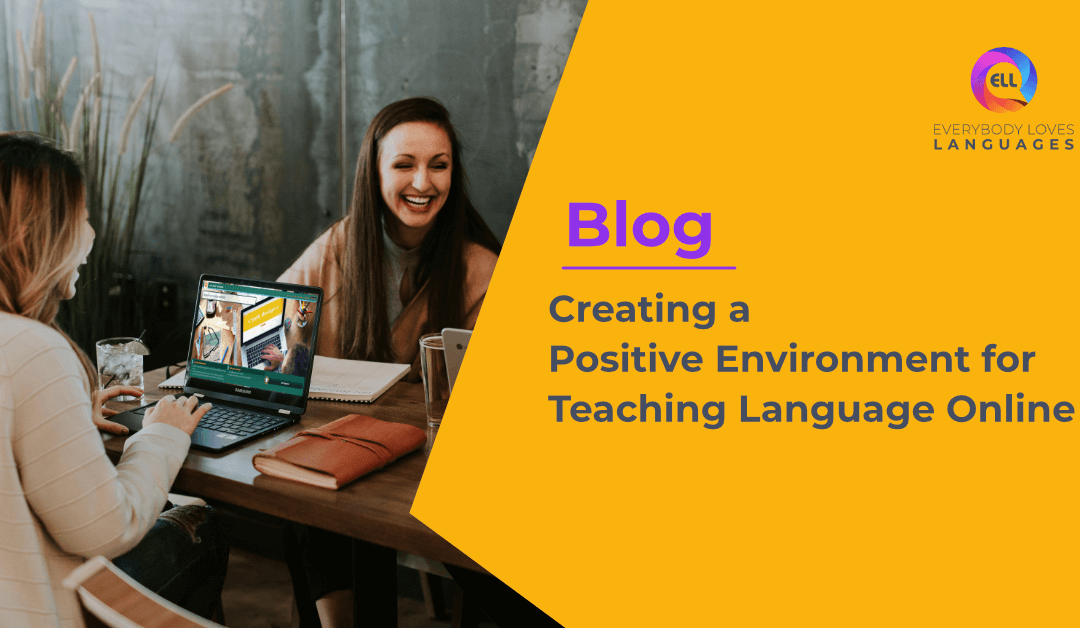Creating a Positive Environment for Teaching English Online.
Pressure. As a language learner, pressure is the most common feeling that goes through your head. To teach effectively, you first must put yourself in the shoes of the learner. What does it feel like to be in the hot seat? As a starter, there is a teacher watching and judging you at all times, expecting you to learn at the exact pace they are teaching and adding new content. On top of that, you want to get this language under your belt as quickly as possible whether it be to get your dream job, to travel, etc.
Picture yourself playing Wheel of Fortune on live TV. You have watched the show a thousand times and know you can be a star. Pat Sajdak calls your name and suddenly the nerves start boiling up, your clammy and your mind goes blank. You failed. Now connect this to a language learner. When everything is moving so fast, students start to become stressed and lose their ability to keep adding to their new talent, ending up lost. Meanwhile teachers keep teaching and adding more content to learn – enhancing that stress even more. This is called the Affective filter, meaning that learning is obstructed when the learner is feeling anxiety and a lack of self-confidence.
Thankfully, there’s a way to create a positive environment for teaching Language online that minimizes the stress and makes it easier for students to learn and embrace their new language.
Motivate and Empower Students
In many ESL settings, teachers have an English-only policy, meaning that students are not allowed to speak in their first language. Although this may seem like the best option to increase the absorption of the new language. It can have the opposite effect. Teaching English online is nowhere as close as immersing yourself in the culture of a new country and language.
You can motivate and empower your students to continue learning and enhancing their skills by allowing them to compare their own language to English, ask questions in their language so they can better understand the link, and offer rewards or incentives (even small ones) for racing language goals.
Help Students Connect to Complex Concepts
Whether it’s allowing them to learn the word-for-word translations of their own language to English, or finding exactly the best for students to learn complex concepts, it’s essential that educators help their students connect to complex concepts. There are so many methods – even creative and innovative ones – that can be used to help students connect concepts. Using programs/games such as Kahoot! Or even allow students to connect with one another outside of the scheduled hours of learning, so they can practice and reflect with one another.
Other options can include a white board app, interactive notebooks and programs, as well as simply allowing time for the student to reflect and rethink what they just learned. It can be easy for the educators to think that how they taught it should be easy enough to grasp (and we can even get frustrated when students aren’t picking up on cues as easily as we think they should), however, this is a brand new language for many and it takes some time. You’ll often notice when a student suddenly “gets it” because they will no longer struggle to remember or connect the dots and you’ll know you’re doing something right.
Adapting Lessons Creatively and Critically to Meet the Needs of English language learners
What works for some students may not work for others. English Language Learners (ELLs) can increase the likelihood of success among their learners by developing strategic and creative learning plans that embrace the fact that online-learning is hard, that promotes active and engaged learning when students are in the “hot seat,” and allows the needs of English language learners to be met through open communication and applied learning styles.
Think back to when you began to learn their language, how do you wish you would have learned or had lessons adapted to your learning ability so you could learn quickly and have fun doing it? Many of your students are probably thinking the same things. You can often reach out and ask them how you can better enhance their experience so that it is a fun one as well as educational. You may be surprised at how simple it is for them to offer their ideas.
Remember, you’re building a relationship here and by connecting and communicating effectively, you can ensure that both you and your students are getting the most out of this experience.
This blog was based off of our first webinar in our professional development series. ELL created this series to give back to our community of language teachers around the globe. To learn more about these instructional strategies, check out the recording here. If you liked what you read, please make sure to register for our next event.




Comentarios recientes